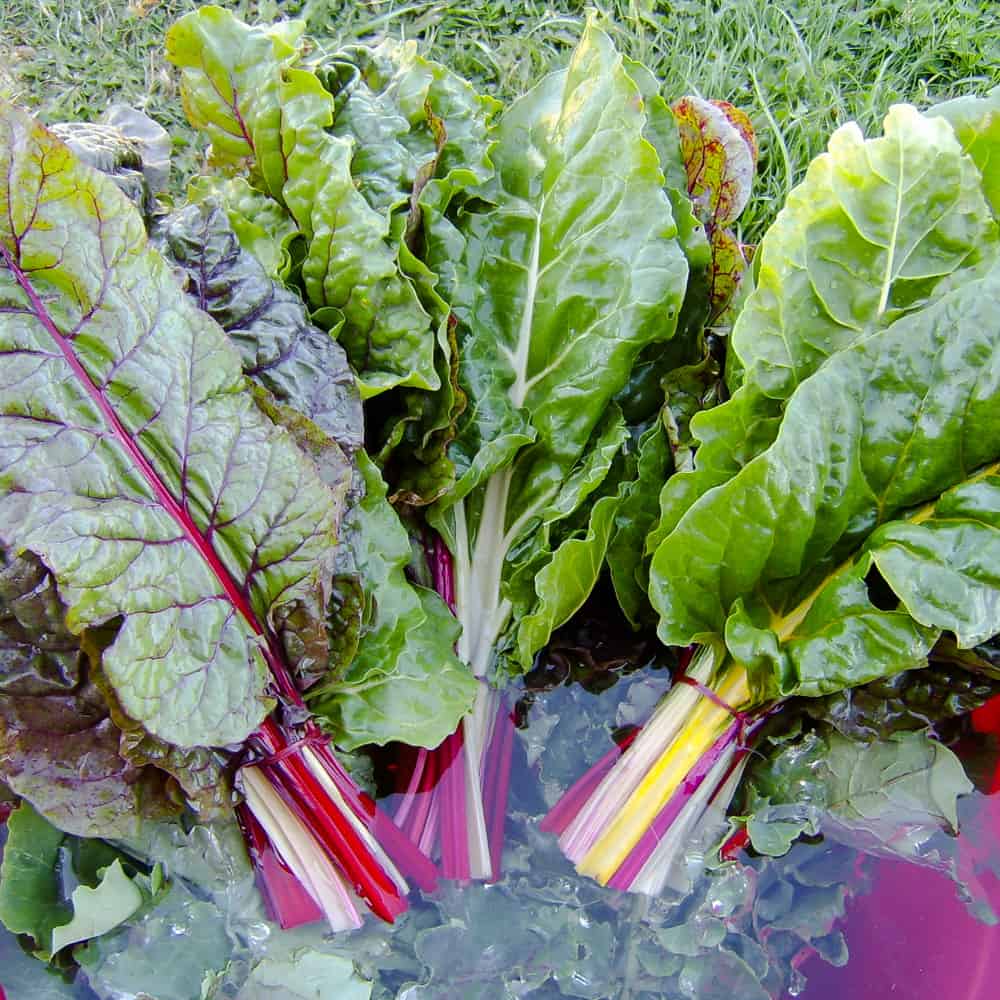Chard, Rainbow (Organic)
Beta vulgaris. 30 days baby, 60 full.
This selection of Rainbow chard is a show stopper in the garden, at farmer’s market, and on the table. Vibrant colors range from dark red, through the spectrum to hot pink, orange, yellow, and white. Leaves can be incorporated raw into salads when young or cooked when older. Cold tolerance makes chard a great winter garden candidate, and it is more productive and tastier than kale in the summer, which are the reasons it can always be found in our small kitchen garden. Deborah Madison’s cookbook, Vegetable Literacy, has a few recipes that made us fall in love with chard stems as their own independent vegetable.
Seed produced by Sauvie Island Growers in Portland, Oregon.
Seed in flats or direct sow March through early August in rows that are 1′ apart. Thin to 1′ spacing for bunching, or 4” for salad size plants. In our area, chard can grow through the winter without protection, but should be planted out in August for this purpose.
Seed Saving
Collect seeds from 20 or more plants in second year once they have started to dry down, usually September. Cut seed heads, place on fabric or a tarp to dry a few more days, then dance to free seed. Collect seeds, then screen and winnow to clean. Isolate from B. vulgaris by 1 mile. Isolate from GMO sugar beet seed production by 2+ miles.



Chelle –
I grew these over the winter and they are still doing great in february, even after being covered in ice for a few days. The deep red/purple is worthy of mixing into a flower bed!
Upvote if this was helpful (0) Downvote if this was not helpful (0) Watch Unwatch Flag for removal